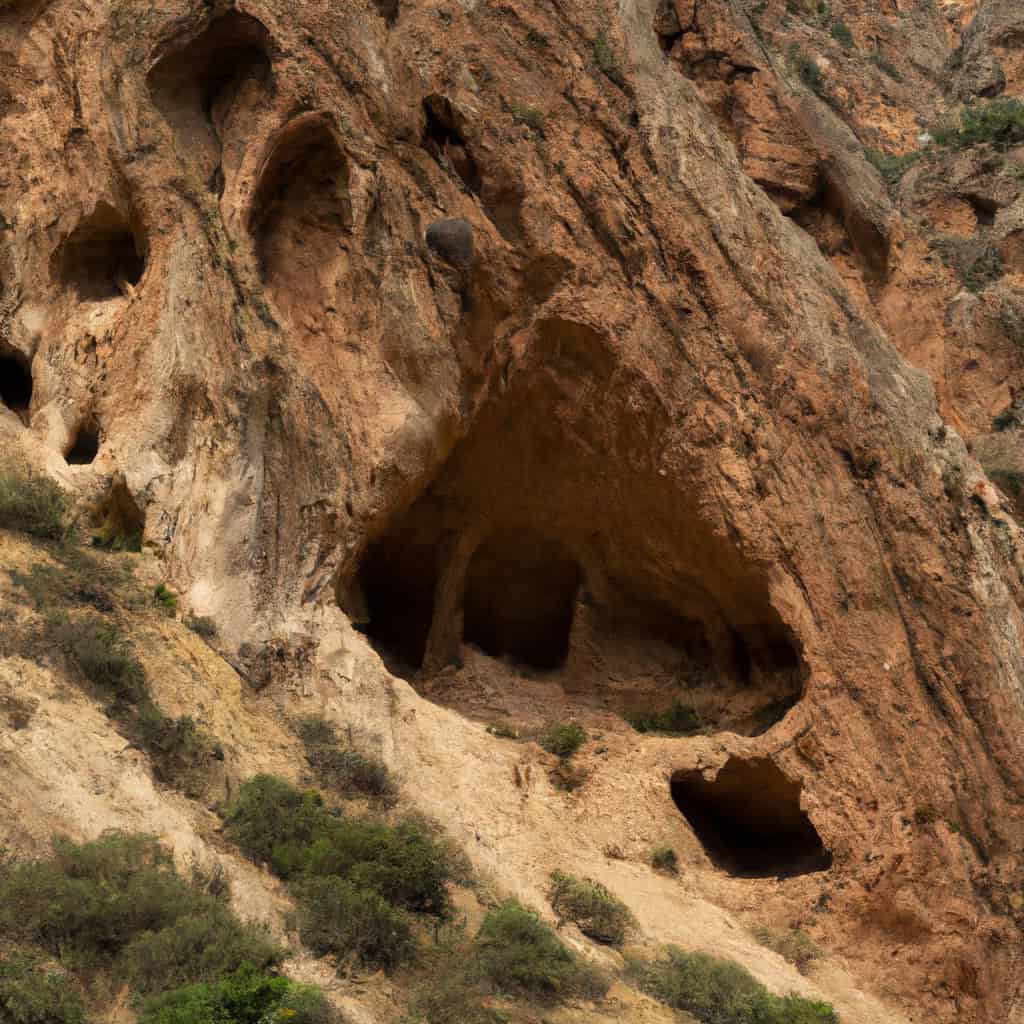Foladi Caves in Foladi Valley, is one of many fascinating sites that both foreign visitors and local tourists can explore while they visit Afghanistan and exploring Bamiyan Province. These caves lie nestled amidst the enriching cultural tapestry of Central Afghanistan, boasting a distinctive history of its own. Often overlooked in favor of more ‘popular’ tourist sights, the Foladi Caves offer a different perspective of the historic depth and natural beauty that Bamiyan Province holds. With traces of early human civilization and religious significance embedded within its walls, the caves possess a mystic aura that fuels the curiosity of every traveler.
Foladi Caves Most Important Events
- Discovery of the Caves: The Foladi Caves were uncovered in the early 19th century, marking a significant milestone in the understanding of early human habitats in Central Asia.
- Archaeological Exploration: The realization about the caves being homes to ancient civilizations unfolded in the 20th century during archaeological expeditions, further enhancing its historical significance.
- Designation as a Protected Site: Acknowledging the caves’ historical importance, the Afghanistan government declared them a protected site in the late 20th century, preserving its legacy.
History of Foladi Caves in Foladi Valley
The history of the Foladi Caves extends back to prehistoric times, where early traces of human existence found within them suggest that they served as dwellings for the early Homo Sapiens during the Stone Age period. Artifacts and cave paintings dating back to this era offer fascinating insights into the lifestyle and survival tactics of our primitive ancestors.
In the following centuries, these caves became an integral part of the Buddhist landscape, with the cavernous spaces converted into sanctuaries and meditation retreats during the Kushan era, around the 1st to 3rd century AD. Buddhist monks carved intricate designs into the cave walls, depicting religious scenes and Buddhist ideologies. This revered site attracted monks and ‘Silk Road’ travelers from far-flung regions of Asia.
Centuries later, when Islamic influence permeated Bamiyan Province, the Foladi Caves experienced another transformation. During the Islamic Caliphate, around 7th to 13th century, the caves served as fortress hideouts during military campaigns. Even amidst periods of conflict and change, the caves remained a symbol of resilience and unity, their echoing chambers bearing silent testimony to centuries of cultural and religious interchange.
Why It’s Important to Afghan History
The Foladi Caves have played a pivotal role in Afghan history. As a hub of Buddhist civilization in the Kushan era, they contributed immensely to the cultural amalgamation of South Asian and Central Asian Buddhist traditions, impacting the entire sociocultural fabric of Afghanistan.
Moreover, their usage as hideouts during Islamic Caliphates signifies their strategic importance. These caves witnessed the high tides of historical events, and their survival through centuries of political and religious upheaval makes them invaluable assets in understanding Afghanistan’s dynamic history.
Why to Visit Foladi Caves
The Foladi Caves are much more than just a historic site; they appeal to travel enthusiasts seeking uniqueness embedded within nature’s swaddle. Each journey into this labyrinth holds the promise of discovery – from the rugged rock formations that shape its interior, the ancient cave paintings, to the panoramic view of Bamiyan’s breathtaking landscape from the cave mouth.
The Foladi Valley surrounding the caves teems with scenic beauty. The surreal limestone cliffs speckled with lush vegetation, the meandering rivers cutting across its floor, and the undisturbed wildlife offer opportunities for hiking, nature walks, and wildlife photography.
- Admire the remains of ancient Jain and Buddhist Art
- Marvel at the stunning natural rock formations
- Witness the panoramic views of Foladi Valley
- Immerse in the tranquility of off-the-beaten-track nature trails
- Explore the archaeological richness of the region
The Foladi Caves, being an integral part of Bamiyan tour circuit, are well-accessible from the city center. The ideal time to visit is from May to October when the weather is moderate.
Cultural & Tourist Significance
The Foladi Caves hold high cultural and tourist importance. The caves feature prominently on the tourism map of Afghanistan, drawing tourists not just for their archaeological worth but for the idyllic settings in the Foladi Valley.
Also, the caves have religious relevance for Buddhists, Jains, and Hindus. Even today, many pilgrims visit the caves to embrace their sacred aura, contributing to the blend of heritage and the natural setting creating a unique vibe that is hard to resist.
Collectively, with their rich architectural nuances, historical legacy, and beautiful location in the heart of Foladi Valley, the caves are a significant cornerstone in Afghanistan’s tourism development efforts.
Interesting Facts
Here are some lesser-known facts, myths, and legends associated with the Foladi Caves. According to a local legend, the caves are filled with hidden treasure left behind by ancient civilizations. However, despite numerous explorations, no such treasure has been found.
Did you know that Foladi Caves house some of the world’s oldest cave paintings? These paintings provide a glimpse into the religious and cultural practices of past civilizations.
Interestingly, despite their long history, parts of the Foladi Caves remain unexplored. There are inaccessible chambers believed to hold secrets that await discovery, keeping the thrill of exploration alive.
In conclusion, Foladi Caves offer an incredible journey into Afghanistan’s history while immersing you in spectacular natural beauty. As you come home from your trip, you carry not just memories but echoes of ancient civilizations, religious serenity, and a strengthened bond with nature.

